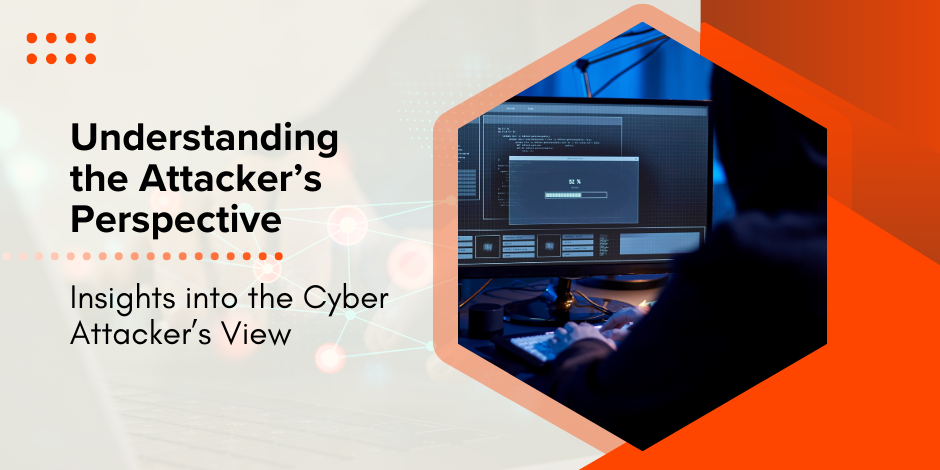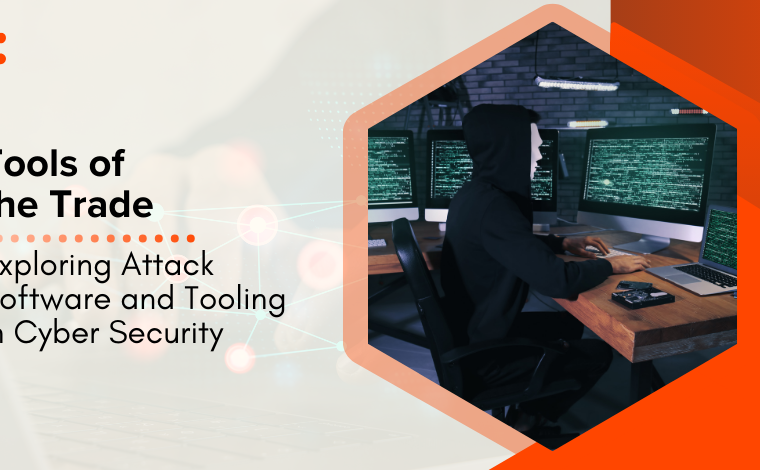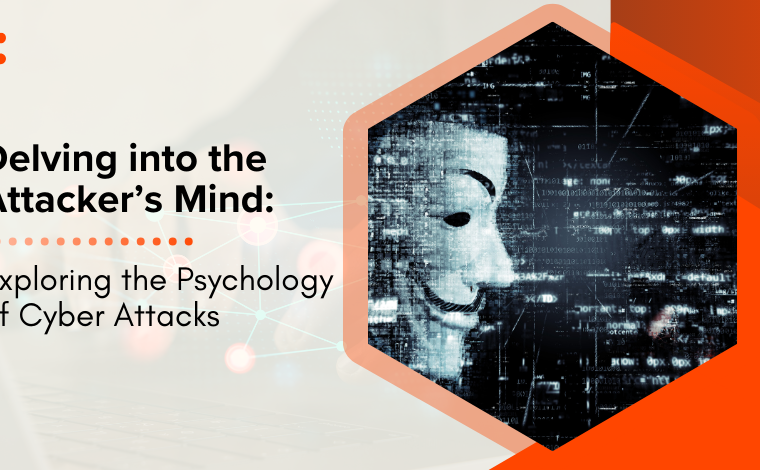Understanding the Attacker’s Perspective in Cyber Security: Insights into the Attacker’s View

Stay Informed With Our Weekly Newsletter
Receive crucial updates on the ever-evolving landscape of technology and innovation.
Understanding the attacker’s perspective in cyber security is crucial for individuals and organisations to effectively defend against their malicious intent.
By delving into cyber attackers’ mindset, motivations, tactics, and techniques, we can develop a comprehensive strategy to safeguard our digital assets and information.
Understanding the attacker’s perspective in cyber security: The mindset of a cyber attacker

A cyber attacker operates with a unique mindset driven by various factors.
They possess a deep understanding of technology and solid motivation to exploit vulnerabilities for personal gain or disruption.
Their approach is strategic, frequently adapting to advances in cyber security measures.
Furthermore, a cyber attacker’s mindset is often shaped by a complex interplay of factors, including their background, experiences, and environment.
Some attackers may have a history of involvement in hacking communities or may have received formal training in cyber security, which equips them with the skills needed to carry out sophisticated attacks.
To best defend your organisation against such threats, it is important to have a good grasp of their potential background. This is the first thing to remember when considering and understanding the attacker’s perspective in cyber security
The motivations driving cyber criminals
Cyber criminals are driven by many motivations, ranging from financial gain to political or ideological ideologies.
Financially motivated hackers exploit vulnerabilities to access valuable data, enabling them to extract financial rewards through various means, such as ransomware or identity theft.
In addition to financial gain, some cyber criminals are motivated by a desire to make a political statement or advance a particular ideology.
These individuals may target government agencies, political organisations, or businesses that they perceive as opposing their beliefs, using cyber attacks to further their agenda.
The psychology behind cyber attacks
Cyber attacks are not void of psychological elements.
Understanding the attacker’s perspective in cyber security and the psychological aspects of these attacks can help us better comprehend their strategies.
Factors such as the thrill of success, the desire for power and control, or even the pursuit of revenge can influence an attacker’s actions.
Moreover, the anonymity and perceived lack of consequences in the digital realm can embolden attackers, leading them to take risks and engage in malicious activities that they may not consider in a physical setting.
This sense of detachment from the real-world implications of their actions can contribute to the brazen nature of cyber attacks.
The tactics and techniques of cyber attackers
Cyber attackers employ various tactics and techniques to breach security defences and gain unauthorised access to systems and data.
As technology advances, cyber attackers are becoming increasingly sophisticated in their methods.
They often exploit human vulnerabilities through psychological manipulation techniques such as social engineering, tricking individuals into divulging sensitive information or performing actions that compromise security.
Understanding the attacker’s perspective in cyber security is paramount when preparing your organisation against potential future attacks.
Standard methods used in cyber attacks
From phishing emails and social engineering to malware and brute force attacks, cyber attackers utilise various methods to exploit vulnerabilities and deceive unsuspecting users.
Understanding the attacker’s perspective in cyber security is crucial to staying abreast of these methods and effectively mitigating risks.
Phishing emails, for example, are deceptive messages that appear to be from a legitimate source.
They trick recipients into clicking on malicious links or providing confidential information.
Malware, on the other hand, is software designed to infiltrate systems and steal data without the user’s consent.
The evolution of cyber attack strategies
Cyber attack strategies continuously evolve, driven by technological advancements and the ever-changing cyber landscape.
Attackers are constantly devising new techniques to bypass security measures, thus necessitating the need for adaptive defence strategies.
With the rise of artificial intelligence and machine learning, cyber attackers leverage these technologies to automate and enhance their attacks.
This poses a significant challenge for cyber security professionals, who must continuously update their knowledge and skills to combat these evolving threats effectively.
The role of social engineering in cyber attacks

Social engineering plays an important role in cyber attacks, relying on human psychology to manipulate individuals and gain access to sensitive information.
Social engineering is a sophisticated form of attack that preys on human emotions and behaviours. It exploits trust, fear, and urgency to trick individuals into divulging confidential data or performing actions that benefit the attacker.
It is a psychological manipulation technique that is constantly evolving, making it crucial for individuals and organisations to stay vigilant and understanding the attacker’s perspective in cyber security.
The art of manipulation in cyber security
Cyber attackers skillfully exploit human weaknesses, such as trust or curiosity, to deceive victims into divulging confidential information or performing actions that compromise security.
By being aware of these tactics, individuals can be better prepared to defend against such manipulations.
Moreover, social engineering attacks can take various forms, including phishing emails, pretexting phone calls, or even physical impersonation.
Attackers often research their targets extensively to tailor their approach, making it harder for individuals to detect the deception.
Individuals must verify the authenticity of requests for sensitive information and question any unusual or unexpected communications.
The impact of human error in cyber attacks
Human error is often a significant factor in successful cyber attacks.
Lack of awareness about security protocols, failure to update software, and negligence in handling suspicious emails are examples of human errors that can lead to catastrophic consequences.
Educating users about these risks is paramount as it ensures they are better equipped and prepared to face any cyber threats.
Furthermore, human error can result from fatigue, stress, or lack of training. In high-pressure situations, individuals may overlook security best practices or fall victim to social engineering tactics more easily.
Organisations must invest in comprehensive cyber security training for their employees to mitigate the risks associated with human error and enhance overall security posture.
The anatomy of a cyber attack
A cyber attack follows a distinct sequence of stages, each serving a specific purpose in achieving the attacker’s goals.
When delving into the intricate world of cyber attacks, it becomes evident that attackers meticulously plan their strategies to infiltrate systems and compromise data.
The complexity of these attacks often involves a series of stages carefully orchestrated to maximise the impact on their targets.
The stages of a cyber attack
A typical cyber attack involves reconnaissance, gaining initial access, escalating privileges, maintaining persistence, and finally achieving the attacker’s objectives.
Understanding these stages enables organisations to detect, respond, and recover effectively.
Reconnaissance, the initial phase of a cyber attack, involves gathering information about the target to identify vulnerabilities and potential entry points.
This stage is crucial for attackers to tailor their approach and increase the likelihood of a successful breach.
Gaining initial access marks the point at which attackers exploit the identified vulnerabilities to infiltrate the target system, setting the stage for further malicious activities.
Understanding the lifecycle of a cyber threat
A cyber threat has a lifecycle that dictates its evolution from discovery to eventual resolution.
Defenders can identify patterns and implement countermeasures to mitigate potential threats by studying this lifecycle.
A cyber threat’s lifecycle encompasses various stages, including initial detection, analysis, containment, eradication, and recovery.
Each stage plays a vital role in the overall response to a cyber threat, with defenders working tirelessly to limit the impact and prevent future incidents.
By understanding the attacker’s perspective in cyber security, organisations can enhance their cyber security posture and effectively combat evolving threats in the digital landscape.
Mitigating risks: A view from the attacker’s perspective

By understanding the attacker’s perspective in cyber security, we can better comprehend the weaknesses in our defences and implement proactive security measures to safeguard against potential breaches.
How understanding the attacker’s perspective in cyber security can improve defence
Understanding the attacker’s perspective in cyber security through studying their mindset, tactics, and motivation allows us to anticipate their moves and devise effective counter measures.
By incorporating this knowledge into our defence strategies, we can build robust systems that are resilient against a wide range of cyber threats.
The importance of proactive cyber security measures
Waiting for an attack to occur is reactive and leaves us vulnerable.
Proactive security measures, such as regular training programmes, vulnerability assessments, and the implementation of strong access controls, are essential in protecting our valuable assets and data from would-be attackers.
Conclusion
understanding the attacker’s perspective in cyber security is integral to combating cyber threats effectively.
By examining their mindset, motivations, tactics, and techniques, we can develop proactive security measures that fortify our defences.
Understanding the attacker’s perspective in cyber security is necessary to stay ahead of cyber attacks and safeguard our digital future.
Are you ready for a career in cyber security?
By choosing the Institute of Data’s Cyber Security Programme as your learning partner, you’ll be equipped with the skills needed in this highly sought-after field of tech.
Want to learn more about our programmes? Our local team is ready to give you a free career consultation. Contact us today!




